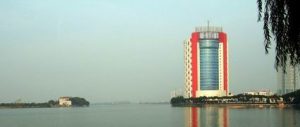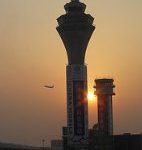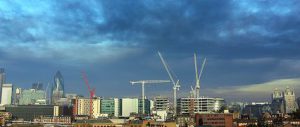Jiang Kejun, senior researcher at the National Development and Reform Commission’s Energy Research Institute, was one of the first Chinese academics to study the concept of low-carbon cities. With his colleagues, he is currently producing a low-carbon programme for Shenyang in north-east China. During the recent climate-change talks in Tianjin, Liu Jianqiang spoke to Jiang about low-carbon cities.
Liu Jianqiang: “Low-carbon city” seems to have become a buzz word, with many places in China adopting this label. Are these cities really low-carbon?
Jiang Kejun: These so-called “low-carbon cities” are actually high-carbon. Per-capita emissions in Chinese cities are two or more times those of western cities. What’s low-carbon about that?
LJ: Why are per-capita emissions so high in Chinese cities?
JK: Because, in developed nations, cities are used primarily for living – emissions come mainly from transportation and buildings. But Chinese cities are home to a lot of industry, and the associated emissions are high. There isn’t actually much residential energy consumption.
China’s strategic promotion of low-carbon cities is a good move, but many cities have gone about it the wrong way. They have all piled in to become “low-carbon cities” and it’s been disastrous.
For example, the conference centre we’re in now looks modern and luxurious – that’s why the [UN-led climate-change] talks are here. But if any of the attendees want to cross the road outside, then they’re in trouble: it’s too wide, it’s a waste of land. This is what Chinese people think modern is, but actually it’s a rural view of modernisation.
You can describe our current approach to city building as entirely mistaken. Look at Beijing – it’s all wrong, from the buildings to the roads to the planning of zones. We build huge buildings but use little of the space. From the 1990s to 2005, Beijing encouraged car use. “Transportation development” just meant increasing average traffic speeds, for example from 14 kilometres per hour to 15 kilometres per hour. Another target is road surface area: officials are judged on how much the area devoted to roads has increased, and the more that happens, the less space there is for bikes and pedestrians.
But Beijing’s city leaders still say that having more cars is a sign of modernity. Beijing once demolished its city walls. Now it’s knocking down the 798 art district [an artist community in decommissioned factory buildings in Beijing’s Chaoyang district]. It is making the same mistake all over again. But this approach represents the way of thinking of most Chinese people.
LJ: What about Beijing’s neighbouring city, Langfang? The environmental authorities once took the media there to do a report on low-carbon cities.
JK: That isn’t genuine either. Langfang wants to be named a “model low-carbon city”, but how is it going about it? It’s just trying to look beautiful and modern. It’s only got a population of 300,000, but several of its roads are as big as Chang’an Avenue [a major route through Beijing]. City greenery includes areas of grass that were actually carbon-intensive to create.
We’ve been telling our colleagues at the Ministry of Environmental Protection to change the standards for model cities to reflect actual low-carbon practices, otherwise it gives the impression that everyone is environmentally-friendly, despite still being high-carbon.
We can’t blame Langfang or any other city – they were working to the ministry’s standards. But now that “low-carbon” is the thing, the ministry is calling “environmentally-friendly” cities “low-carbon” instead. Langfang is a small city, you can normally bike from home to work in ten minutes, and drive in three or four – but car usage is higher than in Beijing. Why? Because parking is free and the roads are wide.
The most frightening thing is that, in the future, half of China’s urban population will be in cities like this. If they all copy Beijing, our low-carbon cities are done for.
LJ: When everyone is trying to create low-carbon cities, why are they instead turning out to be high-carbon?
JK: Because nobody knows what a low-carbon city actually looks like, so most are just using their imagination. A lot of researchers don’t even understand the idea.
LJ: Is it really the case that China doesn’t have a single low-carbon city?
JK: No, it does have one – Shenyang [in Liaoning province] is planning to become a complete low-carbon city. My colleagues and I are helping in the design, from overall industrial makeup to buildings, transport, land use and lifestyles. The first aim is to have a good ratio of pavements and bike lanes to roads, with the best parking spots given to buses and bikes.
There is also a targeted rate of use of public transport and mandated percentage of dedicated bus lanes and bus speeds. Building a subway is just a matter of freeing up local-government finance, it’s not very hard. There’s also going to be an environmentally-friendly taxi fleet – Shenyang has an automobile manufacturing industry, so it can do that. It is also adopting higher energy-efficiency standards. For example, vehicles sold in Shenyang need to be more energy-saving than those sold elsewhere in China. And buildings need to meet energy-saving rates of 75%, the highest standard nationally.
LJ: Does the government have sufficient funds for low-carbon projects like this?
JK: We’ve worked out the costs for Shenyang – what the government will have to pay for and what others will cover. For example, property developers will cover the costs of meeting the 75% energy-saving standard, while other expenses such as transportation development can be met by the state. Government income is more than 50 billion yuan (US$7.5 billion) a year, so it can afford to use more than one billion of that on low-carbon cities.
LJ: Why is Shenyang so active in this field? What’s the motive?
JK: Two members of the Central Political Bureau’s Standing Committee used to work in Liaoning, and they want to see Shenyang as a successful trial. One of those leaders once visited Japan, where he was very impressed by their low-carbon cities, so he requested that Shenyang become a low-carbon city.
LJ: And besides requests from superiors, is there any other motive? Many officials are at least saying they want to build low-carbon cities.
JK: Local officials compete on GDP growth – if your economy grows 12%, I need to reach 13% and beat you. That’s the thinking and they wear each other ragged. But China’s GDP has been growing rapidly for three decades and there’s not that much growth potential left. For example, where will Beijing’s economic growth come from once Shougang Corporation [one of China’s largest steel companies] has relocated? If you can’t compete, change the game – come up with new standards, like “livable cities” or “low-carbon cities”. And these local officials are smart. They want to keep up with global trends and central-government targets.
LJ: Will cities that take low-carbon choices, such as limiting energy-intensive industries, lose economic competitiveness?
JK: For cities such as Shenyang, it will actually increase competitiveness and make them money. Shenyang is a manufacturing hub and its precision machinery for example is – at the demand of central government – extremely energy efficient and very competitive. The world’s 28 key low-carbon technologies, once they go into production, will need to be manufactured. And Shenyang has a strong advantage here.
But cities like Shenyang don’t just want to be low-carbon themselves, they also want to help the nation – even the world – to become low-carbon, because only then will the nation and the world need their energy-saving technology.
This should also be one of China’s strategic aims. Currently China is being pushed to reduce emissions, but in the near future it should be China pushing the world, because we’ve got advanced low-carbon technology and we’ll want our standards to be used globally. In the future, economic competiveness will belong to those with the key technologies.
Our research team tracks several hundred technologies relevant to low-carbon development, and we have found that many of the most advanced ones are in China. If other nations don’t develop their low-carbon economies, they will have no choice but to buy these products from China. For example, all of Indonesia’s [clean] coal technology is imported from China – it’s half the cost of the US equivalent, and the impact on India is huge. A Malaysian once told me that his country would need to come to China to buy electric vehicles.
The pattern of the future will be technological competition between industries and nations. It’s time for the negotiation game to end.
Liu Jianqiang is the Beijing-based deputy editor of chinadialogue.
Homepage image from Stuck in Customs


